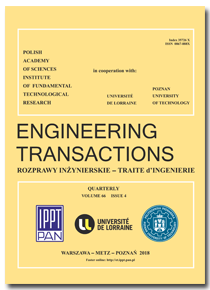10.24423/ENGTRANS.208.2008
The First Half-Turn of an Inertial Vibrator
References
M. Athans, P. Falb, Optimal Control. An Introduction to the Theory and Its Applications, WNT, Warsaw 1966.
T. Banaszewski, Screens, Publ. Śląsk, 1990.
I. Gelfand, S. Fomin, Calculus of Variations, PWN, Warsaw 1975.
H. Górecki, Optimization of Dynamical Systems, PWN, Warsaw 1993.
J. Ławrynowicz, Calculus of Variations with an Introduction to the Mathematical Programming, WNT, Warsaw 1977.
Numerical Recipes in C. The Art of Scientific Computing, Cambridge University Press, New York 1992.
A. Jagiełło, Non-Holonomic Transformations in the Electric Machines Theory, PWN, Warsaw 2002.
J. Michalczyk, Vibratory Machines. Dynamical Calculations, Vibrations, Noise, WNT, Warsaw 1995.
W. Paszek, Transient States of Alternating Current Electric Machines, WNT, Warsaw 1986.
DOI: 10.24423/ENGTRANS.208.2008




